1.2 — Externalities & Bargaining
ECON 410 • Public Economics • Spring 2022
Ryan Safner
Assistant Professor of Economics
safner@hood.edu
ryansafner/publicS22
publicS22.classes.ryansafner.com
Supply and Demand: Social Costs & Benefits

Demand: marginal social benefit (MSB)
- value to consumers of consuming output
Supply: marginal social cost (MSC)
- opportunity cost of pulling resources out of other uses
Equilibrium: MSB=MSC
- using resources efficiently, no better alternative uses
Supply and Demand: Social Costs & Benefits

Principle of “payment in accordance with product”
- things you consume, you compensate society for the marginal (social opportunity) cost of
- things you produce, society compensates you the marginal benefit created
Price system (when markets work well) properly aligns incentives on the margin
- link responsibility & reward/punishment
Supply and Demand: Social Costs & Benefits

Changes that affect others are mitigated through price system
- Entering and competing with an incumbent
- Discovering platinum
Called pecuniary externalities
- offsetting costs and benefits across persons
- still create optimal incentives
Externality
- “Real” or “technical” externality: an action that incurs a cost or a benefit not accounted for via market prices
- As opposed to “pecuniary” externality

Externality
The real problem is that it is external to the price system!
People base decisions off of their preferences and opportunity costs of resources for society (captured in prices)
Prices properly negotiate the opportunity costs and provide information to people
But without price, decisions do not internalize those effects!

Pigouvian Solutions

A.C. Pigou
1877-1959
1920, The Economics of Welfare
Defines (real) externality as divergence between private and social cost/benefit on the margin
People should pay average externality of their actions
- Markets make you do this automatically
- If markets fail, policy can force the market to work again
Problem with externality is that there is a missing price!
Negative Externality

Marginal Private Cost to producer is less than Marginal Social Cost to society
Market Equilibrium (B) too much q at too low p compared to Social Optimum (A)
Negative Externality

Marginal Private Cost to producer is less than Marginal Social Cost to society
Market Equilibrium (B) too much q at too low p compared to Social Optimum (A)
- Overproduction due to external cost
Negative Externality

Marginal Private Cost to producer is less than Marginal Social Cost to society
Market Equilibrium (B) too much q at too low p compared to Social Optimum (A)
Overproduction due to external cost
A deadweight loss from overproduction
Negative Externality: Pigouvian Solution

A.C. Pigou
1877-1959
- Policy solutions to externalities should focus on the missing price
- Narrowly tailor policy to create or modify price `
- "Pigouvian" tax or subsidy
Negative Externality: Pigouvian Solution

Set a specific tax t=MSC−MPC
Eliminates the DWL
Internalizes the externality into the price system
Producers (and consumers) now consider the true cost to society
- MPC (with tax) =MSC
Pigouvian Taxes

"Sitting is banned in the following places: "in St. Mark’s Square and in Piazzetta dei Leoncini, beneath the arcades and on the steps of the Procuratie Nuove, the Napoleonic Wing, the Sansovino Library, beneath the arcades of the Ducal Palace, in the impressive entranceway to St. Mark’s Square otherwise known as Piazzetta San Marco and its jetty." ($200)
Pigouvian Taxes

"I. A carbon tax offers the most cost-effective lever to reduce carbon emissions at the scale and speed that is necessary. By correcting a well-known market failure, a carbon tax will send a powerful price signal that harnesses the invisible hand of the marketplace to steer economic actors towards a low-carbon future."
Signed by 27 Economics Nobel Laureates, 4 former Federal Reserve chairs, among many other famous economists
Pigouvian Taxes

"II. A carbon tax should increase every year until emissions reductions goals are met and be revenue neutral to avoid debates over the size of government. A consistently rising carbon price will encourage technological innovation and large-scale infrastructure development. It will also accelerate the diffusion of carbon-efficient goods and services."
Signed by 27 Economics Nobel Laureates, 4 former Federal Reserve chairs, among many other famous economists
Pigouvian Taxes

"III. A sufficiently robust and gradually rising carbon tax will replace the need for various carbon regulations that are less efficient. Substituting a price signal for cumbersome regulations will promote economic growth and provide the regulatory certainty companies need for long-term investment in clean-energy alternatives."
Signed by 27 Economics Nobel Laureates, 4 former Federal Reserve chairs, among many other famous economists
Externalities and Property Rights
“The Fox Case”
In 1802, Lodowick Post organized a fox hunt in Southampton, NY
- His dogs caught the scent, and he gave chase to a fox
Jesse Pierson appears “out of nowhere,” kills, and claims the fox for his own
- Claims not to have seen Post
Post sued Pierson to get the fox back
- Lower court sided with Post; Pierson appealed to NY Supreme Court
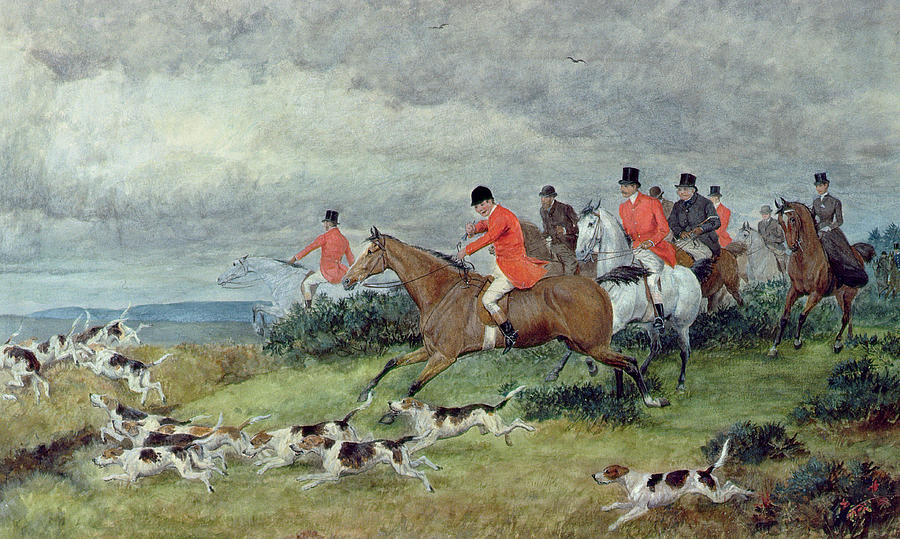
“The Fox Case”

Legal question: When do you own an animal?
NY Supreme Court ruled for Pierson (who killed fox)
“If the first seeing, starting, or pursuing such animals...should afford the basis of actions against others for intercepting and killing them, it would prove a fertile source of quarrels and litigation”
“However uncourteous or unkind the conduct of Pierson towards Post, in this instance, may have been, yet his act was productive of no injury or damage for which a legal remedy can be applied. We are of opinion the judgment below was erroneous, and ought to be reversed.”
“The Fox Case”
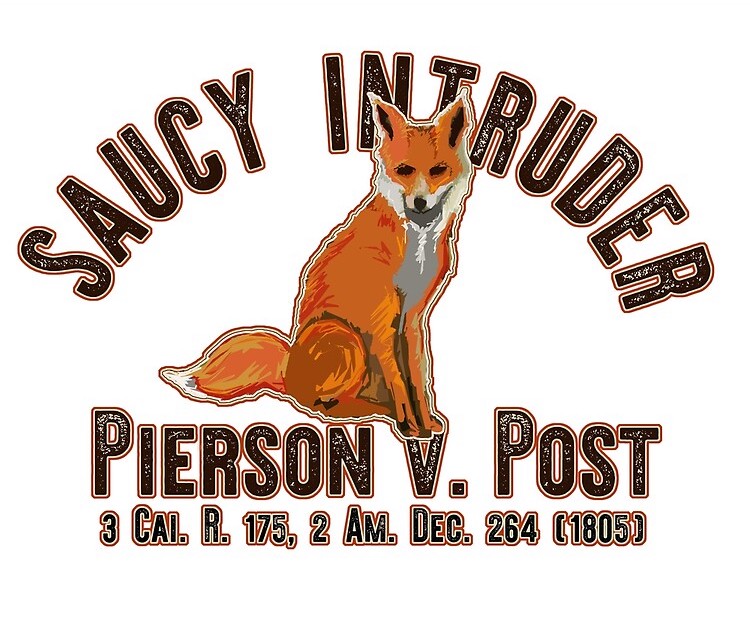
- Judge Livingston’s dissent:
“[A] fox is a "wild and noxious beast." Both parties have regarded him, as the law of nations does a pirate, "hostem humani generis,"...His depredations on farmers and on barn yards, have not been forgotten; and to put him to death wherever found, is allowed to be meritorious, and of public benefit. Hence it follows, that our decision should have in view the greatest possible encouragement to the destruction of an animal, so cunning and ruthless in his career.”
“But who would keep a pack of hounds; or what gentleman, at the sound of the horn, and at peep of day, would mount his steed, and for hours together...pursue the windings of this wily quadruped, if, just as night came on, and his stratagems and strength were nearly exhausted, a saucy intruder, who had not shared in the honours or labours of the chase, were permitted to come in at the death, and bear away in triumph the object of pursuit?”
What Rule?
If Pierson gets the fox
- simpler rule: “finders keepers”
- bright-line, easy to implement, discourages disputes
If Post gets the fox
- better incentives for hunting hard-to-catch noxious animals (like foxes)
Tradeoff between simplicity and good incentives

Some More Examples of Disputes

My neighbor likes tall trees
- does she have the right to plant a tree on her property that shades my pool?
- do I have a right to an unobstructed view? or an unshaded pool?
You want to have a party
- do you have the right to make noise in your house/dorm?
- does your neighbor have the right to good nights sleep in their house/dorm?
I own a small plant located on a river
- do I have a right to use the river for cooling?
- do I have a right to pollute as much as I want?

How Should Property Rights Be Allocated? Easy Case
Example: There is a car which you value at $3,000, and I value at $4,000.
- It is efficient for me to end up with the car.

How Should Property Rights Be Allocated? Easy Case
Example: There is a car which you value at $3,000, and I value at $4,000.
It is efficient for me to end up with the car.
Suppose I start out with the car

How Should Property Rights Be Allocated? Easy Case
Example: There is a car which you value at $3,000, and I value at $4,000.
It is efficient for me to end up with the car.
Suppose I start out with the car
Suppose instead, you own the car

How Should Property Rights Be Allocated? Easy Case
Example: There is a car which you value at $3,000, and I value at $4,000.
It is efficient for me to end up with the car.
Suppose I start out with the car
Suppose instead, you own the car
It does not matter who is initially assigned a property right, our bargaining will reach the efficient result!

The Coase Theorem
It (Often) Doesn't Matter How We Start
- This is the essence of what is called the Coase theorem:
If transaction costs are low, with well-defined and tradeable property rights, parties can bargain voluntarily to reach the efficient outcome.
- Note: the starting point does matter for distribution!

It (Often) Doesn't Matter How We Start
Coase: there is nothing new or radical here, if you understand Adam Smith
Resources tend to flow to those who value them the most
Example: I will pay you to acquire the car if you currently own it

More Interesting: Incompatible Uses
We don't need to resort to law for mutually-agreeable transactions (like the car)
What's more interesting are incompatible uses of our own property that give rise to conflict
- One person's use of their own property imposes an externality on another
Here, we do need the law to define the rights...but that's not the end of the story
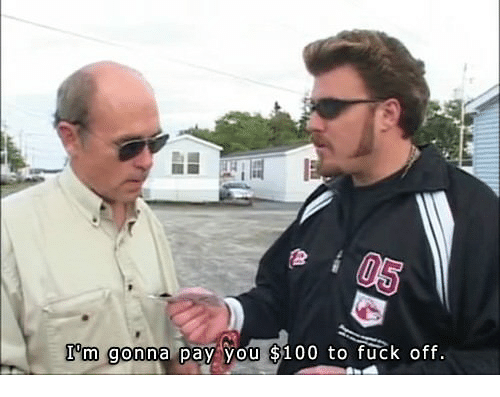
The Pigouvian View
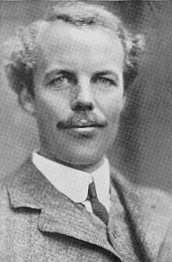
A.C. Pigou
1877-1959
Each party only considering own MPC and MPB
Injurer harms−−−−→ Injured
Examples:
- polluting factory harms−−−−→ households living nearby
- neighbor planting trees harms−−−−→ my shaded pool
- partying neighbor harms−−−−→ quiet neighbor
Tax/restrain injurer (A) until his MPC = MSC
Externalities as a Property Rights Problem

Ronald H. Coase
(1910-2013)
Economics Nobel 1991
Harm is actually bilateral, not unilateral
- Party A ⟺harms Party B
Requires two associating parties to have a dispute
Settling the dispute will impose a cost on some party
Origin of the problem is unclear property rights!
- Who has right/duty over activities creating the externality?
Coase, Ronald H, 1960, "The Problem of Social Cost," Journal of Law and Economics 3:1-44
Externalities as a Property Rights Problem

Ronald H. Coase
(1910-2013)
Economics Nobel 1991
“The traditional approach has tended to obscure the nature of the choice that has to be made. The question is commonly thought of as one in which A inflicts harm on B and what has to be decided is: how should we restrain A? But this is wrong. We are dealing with a problem of a reciprocal nature. To avoid the harm to B would inflict harm on A. The real question that has to be decided is: should A be allowed to harm B or should B be allowed to harm A?” (p.2).
Coase, Ronald H, 1960, "The Problem of Social Cost," Journal of Law and Economics 3:1-44
Externalities as a Property Rights Problem

Ronald H. Coase
(1910-2013)
Economics Nobel 1991
Harm is often bilateral, not unilateral
Takes two parties to have a dispute
A ⟺ B
Origin of the problem is rights are not clear (undefined or unenforced)!
Who has right/responsibility over activity creating the external harm?
Coase, Ronald H, 1960, "The Problem of Social Cost," Journal of Law and Economics 3:1-44
An Example
"[Imagine] the case of a confectioner the noise and vibrations from whose machinery disturbed a doctor in his work. To avoid harming the doctor would inflict harm on the confectioner. The problem posed by this case was essentially whether it was worth while, as a result of restricting the methods of production which could be used by the confectioner, to secure more doctoring at the cost of a reduced supply of confectionery products," (p.2).
Coase, Ronald H, 1960, “The Problem of Social Cost” Journal of Law and Economics 3: 1-44
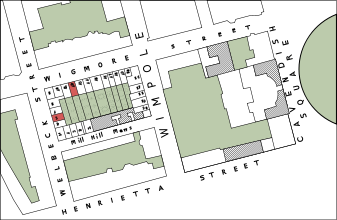
Sturges v Bridgman 11 Ch. D. 852 (1879)
The Pigouvian View

A.C. Pigou
1877-1959
Confectioner is injuring the doctor, the victim and not internalizing the external cost of his machinery
Harm: A→B
Tax offender (A) until his MPC = MSC
The Coasian View
Does the Doctor have the right to a quiet work environment?
Does the Confectioner have the right to use own equipment as noisily as he wants?
Note there was no problem until the Doctor expanded his waiting room!
Coase, Ronald H, 1960, “The Problem of Social Cost” Journal of Law and Economics 3: 1-44

Sturges v Bridgman 11 Ch. D. 852 (1879)
Coase's Perspective

Ronald H. Coase
(1910-2013)
Economics Nobel 1991
“The doctor's work would not have been disturbed if the confectioner had not worked his machinery; but the machinery would have disturbed no one if the doctor had not set up his consulting room in that particular place...” (p.13).
Property Rights and Externalities
Court must must imposing a cost on either the defendant or plaintiff
Real issue is the social balance of efficiency
At what rate is society willing to give up confections for medical services, and vice versa?

The Coasian View in Sturges v. Bridgman
Again, it doesn't matter for efficiency to whom the property right is awarded, so long as parties can bargain
If Doctor wins: confectioner can pay doctor to make noise, or buy soundproofing
If Confectioner wins: doctor can pay confectioner to slow/quiet production, or buy soundproofing

Sturges v Bridgman 11 Ch. D. 852 (1879)
The "Coase Theorem" is Misunderstood
Its really George "Stigler's Coase Theorem"
Simplifying assumptions of zero transactions costs
The "Coase Theorem" in the Real World
In real world of transactions costs, the assignment of property rights matters!
Property rights and resources are sticky!
Means some allocations are more efficient than others!
The "Coase Theorem" in the Real World
Coase: forget "Blackboard economics" and go study the real world of institutions
Launches "Law & Economics" field
How should property rights be assigned to minimize the total cost of externalities and to maximize efficiency?

Externalities Adjudicated at Law
Most externalities in U.S. mediated through common law legal system
Courts assess how much harm was caused
Individuals causing harm to others must pay:
- compensatory damages (to redress harms)
- punitive damages (to deter future externalities)
Externalities persist if property rights are not clear or are not enforced

Externalities Adjudicated at Law
Even in law there is the distinction between “pecuniary” vs. real externalities
Example: I set fire to your house.
Physical damages: the value of the house destroyed
- real externality
Pure economic loss: your lost house raises/lowers the value of all houses in the neighborhood
- pecuniary externality

Lots of Examples in Common Law
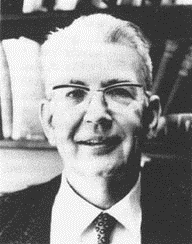
Ronald H. Coase
(1910-2013)
Economics Nobel 1991
Coase provides lots of examples from nuisance cases in common law:
- Sturges v Bridgman 11 Ch. D. 852 (1879)
- Fontainebleau Hotel Corp. v. Forty-Five Twenty-Five, Inc (1959) 114 So. 2d 357 (1959)
- Bryant v. Lefever 4 C.P.D. 172 (1878-1879)
- Bass v. Gregory 25 Q.B.D. 481 (1890)
In each case, regardless of who is held liable (or found to have the property right), parties can negotiate to undertake whatever remedy is cheapest to fix (or endure), leading to efficient outcome
The Coase Theorem, Reprise

Ronald H. Coase
(1910-2013)
Economics Nobel 1991
“Judges have to decide on legal liability but this should not confuse economists about the nature of the economic problem involved. In the case of the cattle and the crops, it is true that there would be no crop damage without the cattle. It is equally true that there would be no crop damage without the crops. The doctor’s work would not have been disturbed if the confectioner had not worked his machinery; but the machinery would have disturbed no one if the doctor had not set up his consulting room in that particular place...” (p.13).
Coase, Ronald H, 1960, “The Problem of Social Cost” Journal of Law and Economics 3: 1-44
The Coase Theorem, Reprise

Ronald H. Coase
(1910-2013)
Economics Nobel 1991
“If we are to discuss the problem in terms of causation, both parties cause the damage. If we are to attain an optimum allocation of resources, it is therefore desirable that both parties should take the harmful effects into account when deciding on their course of action. It is one of the beauties of a smoothly operating pricing system that...the fall in the value of production due to the harmful effect would be a cost for both parties,” (p.13).
Coase, Ronald H, 1960, “The Problem of Social Cost” Journal of Law and Economics 3: 1-44
The Coase Theorem, Reprise

Ronald H. Coase
(1910-2013)
Economics Nobel 1991
- Coase Theorem:
If transaction costs are low, with well-defined and tradeable property rights, parties can bargain voluntarily to reach the efficient outcome.
Requires:
- low transaction costs
- property rights to be well-defined
- property rights to be tradable
The initial allocation of property rights does not matter, we will always get the efficient outcome
- initial allocation does matter for distribution
Relating Coase To Welfare Economics
First Welfare Theorem: competitive markets in equilibrium maximize efficiency
We said this is not true if there are externalities (or other types of market failure), a “missing market”
But defining tradeable property rights and letting parties negotiate is like introducing the “missing market”!

Transaction Costs
Back to Foxes
Return to Pierson v. Post — both the majority & dissent implied the ruling mattered for efficiency
Doesn't Coase make the case ruling irrelevant?
- If Post values it more, can buy it off Pierson, or vice versa, regardless of the ruling

Back to Foxes
Return to Pierson v. Post — both the majority & dissent implied the ruling mattered for efficiency
Doesn't Coase make the case ruling irrelevant?
- If Post values it more, can buy it off Pierson, or vice versa, regardless of the ruling
But it does matter because of transaction costs!
- Majority: if Post gets the fox, “a fertile course of quarrels and litigation”
- Dissent: killing foxes is a good thing (externality), so lots of people benefit; hard to get efficient amount of fox hunting via bargaining

Transaction Costs Matter
Recall the Coase Theorem is about when transaction costs are low
It also implies the corollary: when transaction costs are high, voluntary bargaining will not reach the efficient outcome!
That Was Coase (1960)'s Whole Point!

Ronald H. Coase
(1910-2013)
Economics Nobel 1991
“If market transactions were costless, all that matters (questions of equity apart) is that the rights of the various parties should be well-defined and the results of legal actions easy to forecast.
“But...the situation is quite different when market transactions are so costly as to make it difficult to change the arrangement of rights established by the law.”
“In such cases, the courts directly influence economic activity.”
“Even when it is possible to change the legal delimitation of rights through market transactions, it is obviously desirable to reduce the need for such transactions and thus reduce the employment of resources in carrying them out.”
Coase, Ronald H, 1960, “The Problem of Social Cost” Journal of Law and Economics 3: 1-44
That Was Coase (1960)'s Whole Point!

Ronald H. Coase
(1910-2013)
Economics Nobel 1991
“However, I tend to regard the Coase theorem as a stepping stone on the way to an analysis of an economy with positive transaction costs. The significance to me of the Coase theorem is that it undermines the Pigovian system. Since standard economic theory assumes transaction costs to be zero, the Coase theorem demonstrates that the Pigovian solutions are unnecessary in these circumstances. Of course, it does not imply, when transaction costs are positive, that government actions (such as government operation, regulation, or taxation, including subsidies) could not produce a better result than relying on negotiations between individuals in the market. Whether this would be so could be discovered not by studying imaginary governments but what real governments actually do. My conclusion: let us study the world of positive transaction costs,” (p.717).
Coase, Ronald H, 1992, “The Institutional Structure of Production,” American Economic Review 82(4): 713-719
That Was Coase (1960)'s Whole Point!

Ronald H. Coase
(1910-2013)
Economics Nobel 1991
“[W]hat are traded on the market are not, as is often supposed by economists, physical entities, but the rights to perform certain actions, and the rights which individuals possess are established by the legal system.” (p.717).
“Because of [transaction costs], the rights which individuals possess, with their duties and privileges, will be, to a large extent, what the law determines. As a result, the legal system will have a profound effect on the working of the economic system and may in certain respects be said to control it. It is obviously desirable that these rights should be as- signed to those who can use them most productively and with incentives that lead them to do so and that, to discover (and maintain) such a distribution of rights, the costs of their transference should be low...” (pp.717-718)
